National Park Service
Biological Science Technician (Aquatic Wildlife)
Summary
Pacific West Region is recruiting summer seasonals at Yosemite National Park, California for Biological Science Technician (Aquatic Wildlife), 0404-4/5.
The typical seasonal period for Yosemite National Park is April-October but can be variable during these months due to weather conditions, project needs, or funding.
Open to the first 250 applicants or until 12/16/2024 whichever comes first. All applications submitted by 11:59 (EST) on the closing day will receive consideration.
Duties
Technicians will work in crews ranging from 2 to 8 individuals. Crews may be assigned to work on aquatic restoration projects (including removing nonnative fish and bullfrogs from alpine and sub-alpine lakes), amphibian and reptile projects (including surveys for Sierra Nevada yellow-legged frogs or other imperiled amphibians), and Northwestern Pond Turtle projects (including surveys, radio telemetry, and trapping of Western Pond turtles). Projects may take place in the front country remote field settings (day field work, accessed by hiking and/or in remote wilderness settings (accessed via multi-night backpacking) and will involve night and weekend work. Projects require a high level of physical fitness, multi-night backpacking (up to 4 nights) in the wilderness, and the ability to work various work schedules (including weekends, split-shift, night shift, and regular day time work schedules).
Duties may include:
- Use of gill nets, backpack electro fisher, and/or turtle traps.
- Eradicating Bullfrogs using pole spears, gigs, hand grab, and traps (this is night work).
- Use of radio telemetry to track freshwater turtles, toads, and/or other wildlife.
- Identifying and surveying for Sierra Nevada amphibian and reptile including species listed under the Federal Endangered Species Act.
- Mark-recapturing of reptiles or amphibians, including scute notches, Passive Integrated Transponder (“PIT”) tags, and/or disease sampling in amphibians (BD/chytrid swabbing).
- Trapping, handling, and marking freshwater turtles, toads, and/or other wildlife.
- Deploying iButtons, HOBO, or other temperature data loggers.
- Performing visual encounter surveys (VES) and/or snorkel surveys.
- Collecting environmental DNA samples from water bodies (aquatic “eDNA”).
- Repairing equipment in the field/office.
- Communicating with the public regarding controversial topics in ecological conservation and technical scientific topics.
- Working with and providing mentorship to volunteers and interns.
- Office work involving data entry, compilation, and writing.
- Using software to coordinate field work and summarize data collected including ArcGIS, the program R, and Microsoft Excel/Access databases.
- Overnight backpacking or camping in remote field settings
- Night work and/or work on weekends
- In addition, GS-05 duties include:Overseeing aquatic wildlife or fisheries science in a leadership role and/or highly independent work assignments.
- Communicating with supervisors and colleagues regarding logistics and work assignments.
- Instructing others in the setting and cleaning of fish from gill nets or site selection and trap placement.
- Organizing, planning, and scheduling field crews for remote backcountry work.
- Mentoring interns and volunteers performing aquatic ecological field studies.
- Facilitating safety dialogues and discussions to ensure safe work practices in remote locations.
Physical Demands: The work is partially sedentary with prolonged standing, walking, and bending often required. Heavy items (e.g., packs and equipment up to 50 pounds) must be lifted and carried on a routine basis.
Working Conditions: The work is performed in an office, laboratory, and in the field. Field work includes exposure to extreme weather conditions and terrain, pesticides, poisonous plants, biting insects, and wild animals.
Yosemite National Park, California, known worldwide for its spectacular natural beauty is the backdrop for this position. Sitting astride the Sierra Nevada Mountains, the park covers 1,182 square miles of varied wilderness ecosystems, from river valleys to alpine meadows to lofty 13,000-foot-high peaks. Yosemite Valley is located 208 miles from San Francisco, 81 miles from Merced, and 94 miles from Fresno. Shopping, medical, postal and laundry services are available in the park. Elevation at the Valley floor is approximately 4,000 feet and 2,200 feet in El Portal. The park is open year-round with the majority of activities occurring during the busy season March through October.

